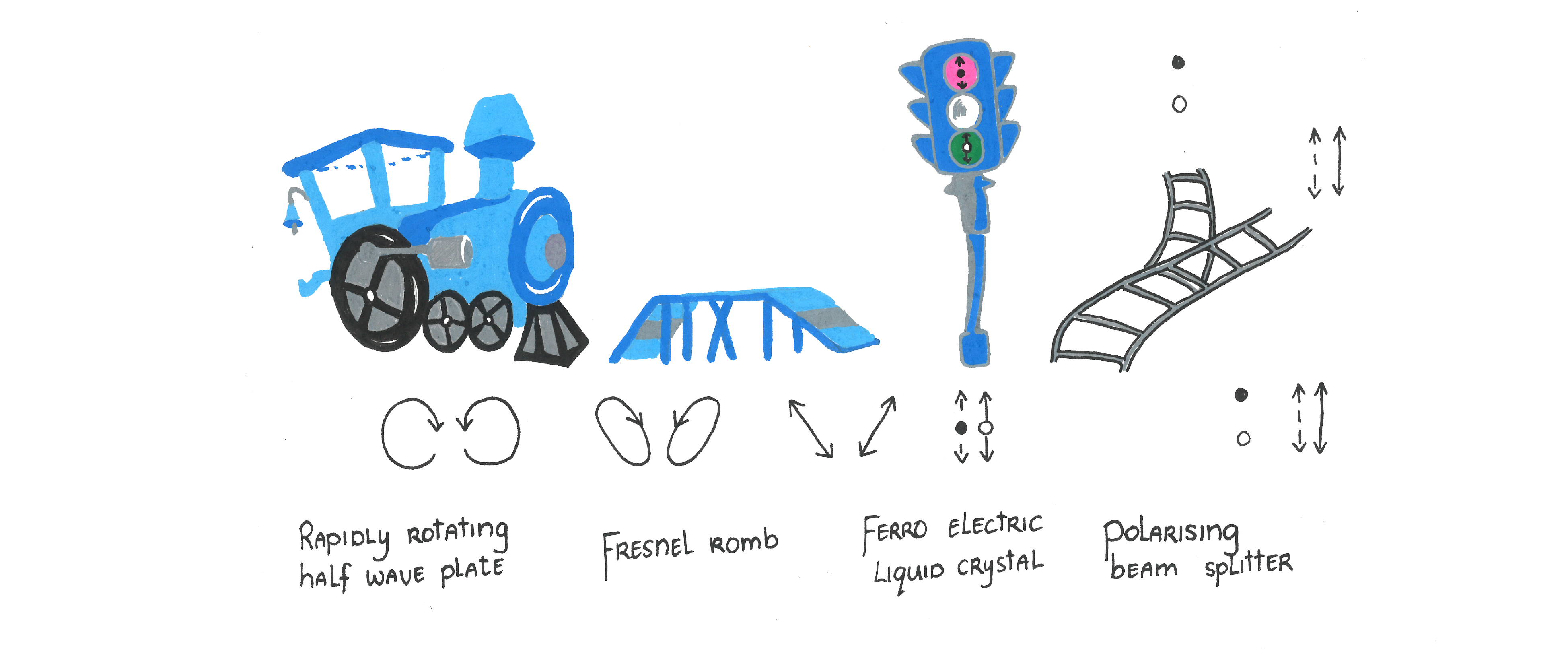Posts from May 2021
Did you try to turn it off and on again?
Do not panic! Trust me, I am an engineer, or... am I?
Last week, I spent quite some time working in the lab again. In the near future,
I would love to do some outdoor measurements, to start searching for life. However,
there are still a few technical challenges that are holding me back from going outside.
One of the instruments I work with is called TreePol and measures the circular polarisation
of light. This state of polarisation is generated, among other things, as a result of
the homochiral property of chlorophyll (in green leaves).The instrument is a spectropolarimeter.
It measures polarisation over a spectrum, just as the word spectropolarimeter implies.
Looking at the polarisation signal over a wider wavelength range is important. Chlorophyll
molecules found in leaves react most strongly to light when it has a wavelength in
the red region of 680 nm. This causes part of the sunlight hitting the molecules is
circularly polarised. This circular signal is very small (~ 1/10 of a percent!) but
big enough to tell whether a leaf is alive or dying.
But how can TreePol measure this (circular) polarisation state of lightwaves? In optics,
we have optical elements that slow down the electrical direction of light, so-called
retarders. With these, we can turn circular polarisation into linear, and vice
versa. You can find more information below!
 The principle of Treepol • measuring by modulating
The principle of Treepol • measuring by modulating
By shining non-polarised light through (transmission) or on (reflection) an ivy leaf,
we activate this characteristic feature of chlorophyll. We aim TreePol at the leaf and
the scattered light falls on the instrument.
- At the front there is a half-wave plate that we rotate very fast with a very fast motor. Only circular polarised light can travel through this, bringing this signal into our instrument at high-speed (like a train).
- Thereafter the light passes through a Fresnel romb. This is also a retarder that delays the light twice, like a kind of bridge, by one-eighth of a wavelength. In total it delays the wave by a quarter of a wavelength, changing the circular signal into a linear one.
- A ferroelectric liquid crystal functions as a kind of traffic light that we can control with electricity. When it is red, it changes the incoming signal in exactly the opposite way to when the traffic light is green. As a result either a vertically or horizontally linearly polarised signal comes out.
- Finally, we have a polarising beam splitter which, like a train switch, sends the vertical and horizontal in two different directions.
According to the Cambridge Dictionary, the definition of an engineer is a person whose work consists of repairing or controlling machines, motors or electrical equipment. The verb engineer means to design and build something according to scientific principles. On the Internet I also found some terms that are applicable to me. For example, I am a person who is very good at solving problems that I didn't know I had.
1 See my blog post on March 21 to find more information regarding homochirality.
